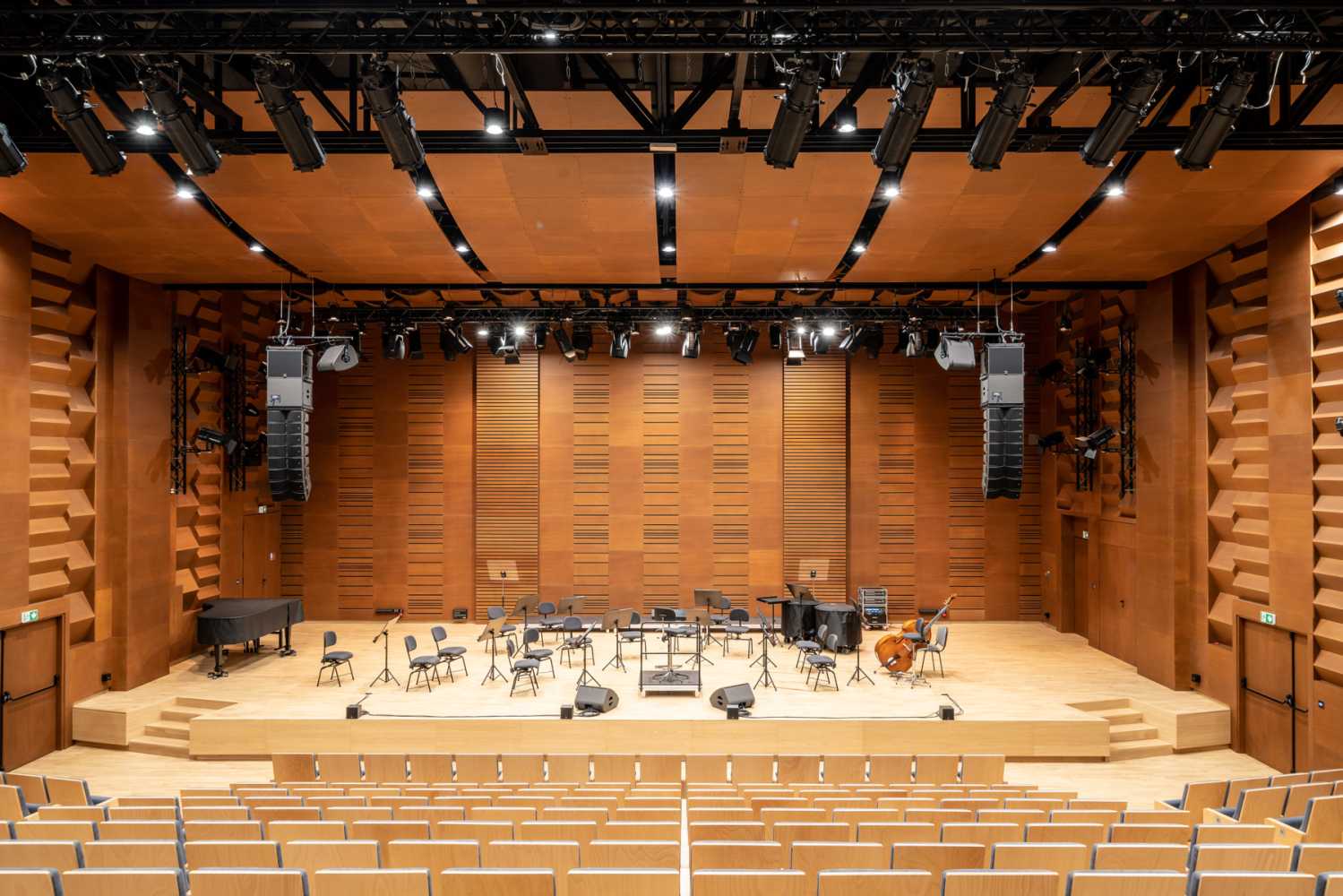Łomża Philharmonic relocates with L-Acoustics
- Details

After many years in different locations, almost two thousand performances, and receiving numerous awards for its artistic achievements and contribution to the development of musical culture, the Philharmonic took the ambitious step of rebuilding an existing venue and refurbishing it to an ideal specification for music performances. That specification includes a comprehensive loudspeaker system from L-Acoustics.
“The building that we chose was designed for sports, not for music, so we needed to completely rebuild it for the Philharmonic,” explains Jan Milosz Zarzycki, general and artistic director of the Łomża Philharmonic. “The project was several years in the making and included significant structural changes, followed by a delayed opening due to the pandemic.”
To achieve the Philharmonic’s goals, the roof needed to be rebuilt from scratch to accommodate heavier loads. The concert hall interior was deepened, and the foyer was adapted into a new concert space for chamber concerts. “As the construction advanced, we began to search for an audio system that would be the centrepiece of the new hall,” continues Zarzycki. “While many classical performances would remain acoustic, we required a flawless sound reinforcement system for pop music concerts. We also needed a system that would blend in with the architecture and not visually overwhelm the hall.”
Warsaw-based distributor Audio Plus was the leading contractor for the project, designing and coordinating all technology elements for the complex redesign. Having previously designed award-winning L-Acoustics systems, including Cavatina Hall in the south of Poland, Audio Plus was confident that the brand had the power, clarity, and flexibility for a project that needed to cater to content that would range from acoustical, reinforced, and hybrid.
“This is a great example of an installation that we have tackled from A to Z for the entire stage technology, not just the sound system in which we specialize,” says Robert Kukiełka, project manager at Audio Plus. “This allowed us to coordinate different parts of the installation, from acoustic adaptation to mechanics, light, and sound. We are proud to have equipped a facility that boasts world-class equipment for many years to come and L-Acoustics’ exceptional reputation and product portfolio firmly positions them at the centre of this refurbishment.”
The venue comprises a concert hall, foyer, sound booth, and recording studio. The concert hall sound design was created in cooperation with specialist consultants ewkAkustika, which managed the acoustic design, with technology design from SDST.
“Several proprietary products were used to shape the concert hall’s acoustics, with a windowless sound booth allowing engineers to listen directly to the hall’s audio feed,” explains Ewa Więckowska-Kosmala, acoustics designer at ewkAkustika. “The foyer, which is used as a second performance space, has also been acoustically treated.”
The main concert hall audio configuration comprises two hangs of eight Kiva II, topped by two SB15 subwoofers, with a further four SB18 subwoofers positioned on the floor. Six 5XT compact 2-way passive cabinets provide front-fill, while two X12 point source cabinets mounted beside the main hangs are used as stage-fills. The entire system is powered by five LA4X amplified controllers, while a P1 Processor drives the Milan-AVB networked system. Monitoring for the orchestra is managed via six X12 and two X8 coaxial enclosures powered by three LA4X amplified controllers, while sound booth monitoring comprises two 108P cabinets.
With classical performances typically reliant on the direct sound of the hall, the house engineers can use either the SB15 subs or further increase the low frequencies by using the SB18, depending on the type of music being played. Different configurations can be quickly recalled using the P1 processor, which also automatically tunes the system if the humidity or temperature conditions within the venue change.
“We intended to create a venue with the ideal aesthetics and technical specification to befit a world-leading classical company,” concludes Zarzycki. “The audio system in the refurbished concert hall has not only met our expectations, but it has exceeded them. We are thankful for the excellent project management from Audio Plus. We are particularly thrilled by the architectural subtlety that the L-Acoustics installation has brought to the project, and the team is amazed at the results.”
















